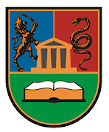Молимо вас користите овај идентификатор за цитирање или овај линк до ове ставке:
https://scidar.kg.ac.rs/handle/123456789/10041Пун извештај метаподатака
| Поље DC-а | Вредност | Језик |
|---|---|---|
| dc.rights.license | openAccess | - |
| dc.contributor.author | Erceg, Slaven | - |
| dc.contributor.author | moreno, Victoria | - |
| dc.contributor.author | Garita-Hernandez M. | - |
| dc.contributor.author | Stojkovic, Miodrag | - |
| dc.contributor.author | Bhattacharya S. | - |
| dc.date.accessioned | 2021-04-20T14:43:12Z | - |
| dc.date.available | 2021-04-20T14:43:12Z | - |
| dc.date.issued | 2011 | - |
| dc.identifier.issn | 1066-5099 | - |
| dc.identifier.uri | https://scidar.kg.ac.rs/handle/123456789/10041 | - |
| dc.description.abstract | Embryonic neural transplants have become clinically relevant over the past 25 years for their possible application in the treatment of cerebellum-related neurodegenerative diseases. While highlighting the important role that fetal neural progenitors have in meeting these challenges, we define rationales for all types of cell therapy involving adult stem cells as well as human embryonic stem cells (hESC) and human induced pluripotent stem (iPS) cells. The recent advances in the field of hESC and iPS cells, including their capacity for differentiation toward regional specific neural lineages, could open a new era of transplantation in cell-based therapy for cerebellar ataxias. © AlphaMed Press. | - |
| dc.rights | info:eu-repo/semantics/openAccess | - |
| dc.rights.uri | https://creativecommons.org/licenses/by-nc-nd/4.0/ | - |
| dc.source | Stem Cells | - |
| dc.title | Concise review: Stem cells for the treatment of cerebellar-related disorders | - |
| dc.type | review | - |
| dc.identifier.doi | 10.1002/stem.619 | - |
| dc.identifier.scopus | 2-s2.0-79953773594 | - |
| Налази се у колекцијама: | Faculty of Medical Sciences, Kragujevac | |
Датотеке у овој ставци:
| Датотека | Опис | Величина | Формат | |
|---|---|---|---|---|
| 10.1002-stem.619.pdf | 226.74 kB | Adobe PDF |  Погледајте |
Ова ставка је заштићена лиценцом Креативне заједнице


